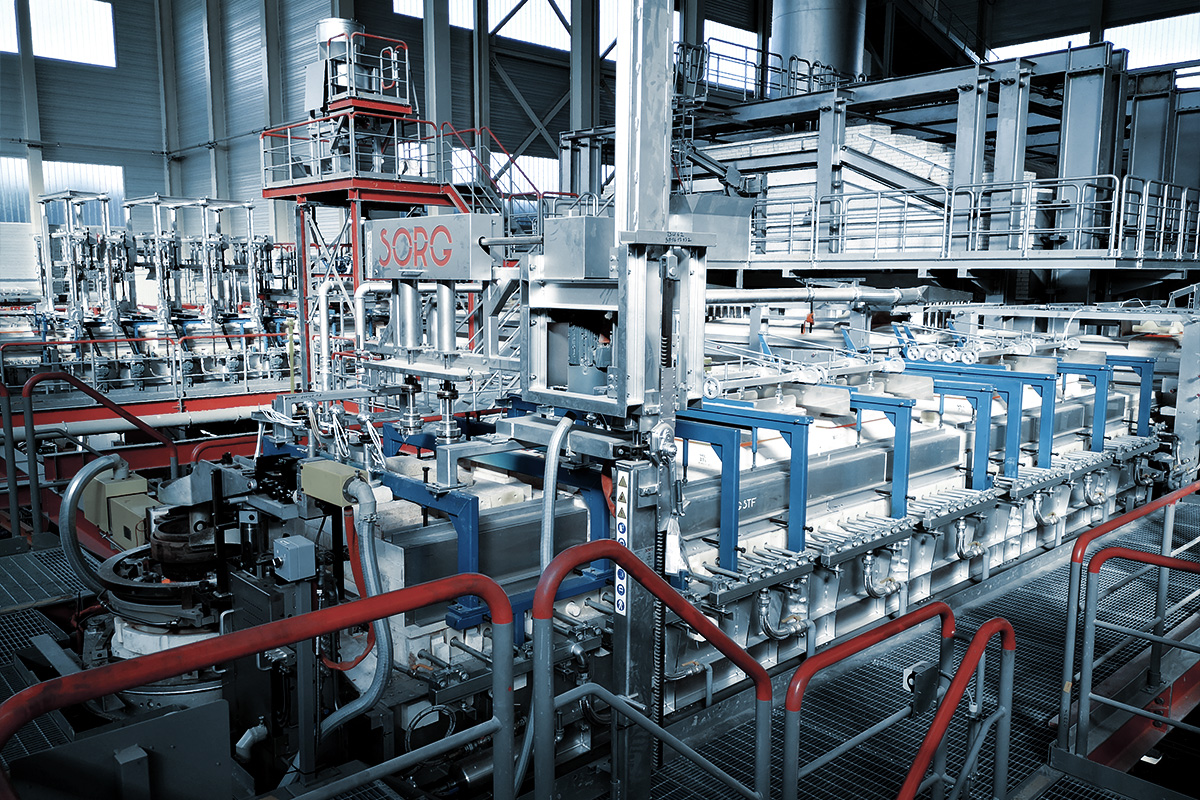STF/E ALL-ELECTRIC FOREHEARTHS
The STF/E all-electric forehearths are heated through molybdenum electrodes inserted into the glass bath or through electrical heating elements above the glass bath. It provides even better control and homogeneity than conventionally heated forehearths, especially with coloured glasses. The energy consumption is also significantly lower than with gas-fired forehearths. When producing high-quality flint glass, heating elements above the glass bath are often chosen.
Besides reducing energy consumption compared to gas forehearths, it also avoids unwanted materials from coming into contact with the glass. The forehearths can be expanded with several add-ons, such as:
- Electrical boosting for equalising zones
- Left/right trimming for gas combustion
- CONTI-DRAIN® to reduce zircon cat scratches
ENCLOSED FOREHEARTHS
This type of forehearth is usually heated indirectly using either radiant electric heating elements or standard gas heating, installed above the top of the refractory tube. This means that the heating effect must be transmitted through the refractory, which results in a heating system that is slow to react. In some glasses, immersed electrodes may also be provided to give direct heating, which reacts very quickly to changes in the power input. Temperature measurement in covered channels is done with thermocouples immersed in the glass bath.
OVERFLOW DRAINS
An overflow drain can be used to remove glass from a working end or forehearth. This may be necessary to maintain a stable melting load or to remove poor quality surface glass. The glass is removed through a normal orifice ring. SORG® has delivered a variety of overflows and is happy to develop customer-specific units.
ADVANTAGES
- Greater cooling capacity. The consistent application of open radiation cooling leads to a high cooling capacity.
- The following factors actively improve the thermal homogeneity:
- Higher cooling capacity
- Left-right trimming (optional)
- Stepping control for cooling systems
- Flexibility: The flexible concept of the STF series offers the optimal solution for each application. There are multiple cooling systems available and the possibility to expand the standard design through add-ons.
